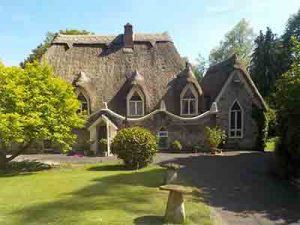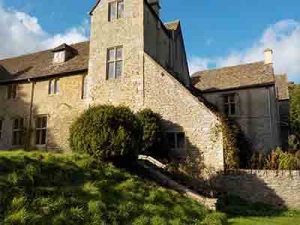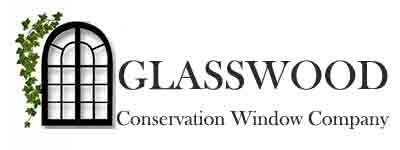Replacing windows in listed building and conservation areas
Windows and doors are often the most important visual aspect of a building, particularly if they have survived for generations, showing distinctive mouldings, uneven putty glazing and characterful glass. Upgrading them is a sensitive task, as there is an inherent conflict between keeping the character of the original and improving levels of thermal efficiency. When replacement is appropriate, we can provide authentic designs, mouldings and finishes with standard or slim double-glazing, single-glazing or special historic glass. Traditional vertical sliding sash windows with standard double-glazed units are available with u-values.
Applying for Listed Building consent
 For Listed Buildings, any works (internal or external) to alter, extend or demolish require Listed Building Consent from the Local Authority planning department prior to proceeding. Application forms can be downloaded from the local authority’s website. Guidance is available on the Government’s Planning Portal website. Local authorities aim to return a decision on smaller schemes within eight weeks; within 13 weeks for major proposals. This includes a statutory 21-day consultation period for consultation with neighbours, amenity societies and other interested parties. If the application involves a Grade I or Grade II* listed building, demolition, or is particularly complicated, the case will be forwarded to Historic England for expert advice, as will certain categories of work to Grade II listed buildings. Applications in England, Scotland & Wales are made to the local authority. In Northern Ireland they are made to the divisional office of the Planning Service. planning porthole
For Listed Buildings, any works (internal or external) to alter, extend or demolish require Listed Building Consent from the Local Authority planning department prior to proceeding. Application forms can be downloaded from the local authority’s website. Guidance is available on the Government’s Planning Portal website. Local authorities aim to return a decision on smaller schemes within eight weeks; within 13 weeks for major proposals. This includes a statutory 21-day consultation period for consultation with neighbours, amenity societies and other interested parties. If the application involves a Grade I or Grade II* listed building, demolition, or is particularly complicated, the case will be forwarded to Historic England for expert advice, as will certain categories of work to Grade II listed buildings. Applications in England, Scotland & Wales are made to the local authority. In Northern Ireland they are made to the divisional office of the Planning Service. planning porthole
What about Conservation areas?
 If a property is not listed, but in a Conservation area, it may still be necessary to obtain planning permission before replacing window and doors. Although houses (but not other buildings, such as flats) are often exempt by being granted ‘Permitted Development rights’, if the property is subject to an ‘Article 4 direction’, prior planning permission from the Council will be required for alterations such as replacing windows and doors, adding conservatories, porches or other extensions. The local authority will be able to confirm if the property is subject to an Article 4 direction. Owners of houses where there is no Article 4 direction are allowed to make many alterations without planning permission where that would be out of proportion to the impact of works carried out. The work should be carried out in accordance with current Building Regulations and within the guidelines, ensuring replacement window and doors are of similar appearance to those used in the construction of the house. The homeowner is responsible for compliance.
If a property is not listed, but in a Conservation area, it may still be necessary to obtain planning permission before replacing window and doors. Although houses (but not other buildings, such as flats) are often exempt by being granted ‘Permitted Development rights’, if the property is subject to an ‘Article 4 direction’, prior planning permission from the Council will be required for alterations such as replacing windows and doors, adding conservatories, porches or other extensions. The local authority will be able to confirm if the property is subject to an Article 4 direction. Owners of houses where there is no Article 4 direction are allowed to make many alterations without planning permission where that would be out of proportion to the impact of works carried out. The work should be carried out in accordance with current Building Regulations and within the guidelines, ensuring replacement window and doors are of similar appearance to those used in the construction of the house. The homeowner is responsible for compliance.
Carrying out unauthorised works to a listed building is a criminal offence, and the owner of the building and any individual or company that has undertaken the construction, can be prosecuted. A planning authority can insist all work carried out without consent is reversed at the owner’s cost. An owner will have trouble selling a property with no consent for work undertaken.
Repair or reinstatement
Consent for listed buildings is typically granted on a ‘like for like’ basis, unless the applicant is able to satisfy certain conditions, such as ‘that the building is not of special architectural or historical interest’ – more likely with a Grade II than a higher listing. For listed buildings of special architectural or historical interest, the planning officer will require the applicant to reinstate and re-use as much of the original material and detail as possible. This may involve scarfing in new sections of timber, freeing sashes, replacing draught proofing, repairing or replacing hardware, re-glazing (possibly using original glass) and fresh decoration. The original colour may also need to be maintained. If repair is not possible, the replacement details will need to replicate the existing design details, including mouldings, glazing method and use of historic glass.
Improvements to energy efficiency
A single-glazed window can have a u-value worse than 5 W/m2 K. Improvements to the energy performance of single-glazed windows and doors are limited to: • The simple addition of draught-proofing strips • Renovation, with bead adjustment and the addition of draught-proofing strips • Curtains, blinds and shutters (effective only at night) • Secondary glazing, which, as noted, can affect the reflection of the windows and the appearance of the interior of the property, as well as presenting condensation and cleaning challenges. Today’s double-glazed timber windows can achieve a BFRC A energy rating or a u-value of 1.4 W/m2 K.
cylinder unfolded into a flat sheet. Cylinder glass displays a distinctive character of faint parallel ripples. For the repair and reinstatement of windows in listed buildings of special architectural or historic interest, the glass should, ideally, be preserved and reused. New float glass may not be acceptable due to its uniform, flat, reflective surface. Alternatives It is possible to imitate historic crown and cylinder glass using hand or machine drawn glass. These types of glass are often used as the outer layer in a doubleglazed unit to add character and reduce visibility of the inner layer.
However, depending on how close the replacement needs to be to the original, a less expensive 3mm ‘period style’, or horticultural, glass may be acceptable. This has a wavy reflection without having the same quality as hand blown glass.
Crown glass

We recommend holding pre-application discussions with the local authority Planning Officer to check if consent is required and to discuss the proposal. If consent is refused, the owner has six months in which to appeal to the Secretary of State for Communities and Local Government (DCLG) or to submit amended plans based on the written advice provided and re-apply for permission.
Double-glazed period windows
When the building is not listed, but is in a Conservation Area with an Article 4 direction (i.e. a non-designated heritage asset), then new replacement windows/doors should be installed under Building Regulations that include Approved Document L1B and L2B (AD L). However, the conservation officer may want to maintain original details (such as single-glazing) that would compromise energy-efficiency in order to preserve character and appearance. AD L allows for this in paragraph 4.19 that states: “Where the replacement windows are unable to meet the requirements of table 1 because of the need to maintain the external appearance of the facade or the character of the building, replacement windows should meet a centre pane U-value of 1.2W/m²K, or single-glazing should be supplemented with low-e secondary glazing….” Secondary glazing is a poor substitute for an efficient double-glazed window. It can affect the reflection of the windows and the appearance of the interior of the property, as well as presenting condensation and cleaning challenges. Other Heritage advice is to use ‘thick curtains’ etc. that offer little daytime help. Therefore, it is advisable to meet the Conservation officer prior to a full application to discuss all the options available. The National Planning Policy Framework gives some guidance on these matters. Para 94 advises planning authorities “to adopt proactive strategies to mitigate and adapt to climate change.” Para 135 states “The effect of an application on the significance of a non-designated heritage asset should be taken into account in determining the application. In weighing applications that affect directly or indirectly non designated heritage assets, a balanced judgement will be required having regard to the scale of any harm or loss and the significance of the heritage asset.
Planning and Conservation officers have considerable discretion over whether to allow replacement with double-glazed windows, but many are unaware of how well-designed joinery, such as heritage windows from Wood Window Alliance members, can maintain authentic period materials, proportions and detailing, while providing modern levels of thermal, acoustic, security and maintenance performance. Submitting samples, full drawing details (elevations and plan) with specifications and photographs of previous projects will help with this process, whether for Grade II listed buildings or for those subject to Article 4 directions, as the following studies show.



Leave A Comment